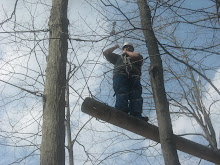One Canadian Dollar gets us approximately 85-90 Kenyan Shillings. This is Proof Positive on how strong the Canadian Dollar is right now. The Canadian Dollar continues to receive more money in return than the American dollar. The benefits are great: a cheaper cost of living, full meals for less than $2.00 CAD, coca-cola that costs less than water, the fact that buying clothes are cheaper than washing clothes... Sounds like a perfect world doesn't it?
I guess it is a perfect world when you have the ability to afford the basic necessities and a little extra. In Kenya, I'm viewed as someone who has more than the average person. Probably very true, but just because it is true does not mean that I am rich in terms of the Canadian Dollar in Kenya. Regardless of any of these facts. A strong dollar by any country means that the value of anything including labour, healthcare, and education are depreciated in other countries.
There are moments here when I think about the middle class. I don't even understand if these people are the middle class because they still live in slum dwellings but make more than 100 KSh (Kenyan Shillings) a day and are well educated. Just because they are able to afford a roof, clothes, food, transportation, and water does not mean they are out of the water. In many cases organizations (even Education for Life where I am posted) struggle to make bank at the end of the month. Running black is difficult and if the organization runs red then it most likely means that the employees don't get paid. Some workers will even donate their salary back to the organization so they can keep a job. These stories haunt my dreams at night because the organizations are necessary to give life skills to students in disparity but also for the workers themselves. The workers are very vulnerable to loosing their livelihoods including their home, their ability to stay nourished. Even situations that Canadians would consider minor could become a big issue. A student's stomach flu that turns into an infection can bankrupt a family because of the lack of a comprehensive health care system. These are not concerns in Canada.
Education for Life's work does not end at life skills and teacher training. EFL actually sends about 50 students to school each year. This gives students the extra boost they need to have a better life. I think these workers are brave. They have the education and experience to get jobs in other parts of the world and although difficult they could start the process to emigrate to the Western world. Instead, they choose to live and work right here in Kariobangi. If they leave, it means there's one less good person to work to make Kenya a better place tomorrow than it is today.
The dollar also depreciates tangible items. What do you need to run a school? Textbooks, work books, pencils, pens. How are these items regulated when there is no money to buy them. Students on average will share one textbook between four students. All students are entitled to exercise books but in many cases there often ragged and run down. I have great difficulty marking books because I have to try not to rip pages out or covers off. When students run out of space in these books, it is not a guarantee that they will receive a new one unless tax dollars have been allocated to that specific school.
The fronts of all government schools indicate the tax dollars allocated to that school to very precise amounts. For example, all schools post the dollar amount allocated to each student for exercise books. Depreciated items like medicine can be difficult to purchase. Conor was the first of the four of us that got sick in Kenya. He needed to get blood work done and had to get medicine. The medicine cost 500 KSh or roughly $5.00 CAD. Conor didn't even need his drug plan through the university to cover his medical costs. The fact that we all have drug plans as students is something to think about. The medicine is depreciated but it does not mean that it is affordable. Remember the average Kenyan makes less than 100 KSh a day or roughly less than $1.00 CAD a day. Getting a cut that you need cleaned and bandaged can make a family destitute here. Its unheard of in Canada.
In North American right now, economists are trying to understand and explain what the impact of a high Canadian Dollar will be in comparison to the United States of America. What does it mean for the cost of food, gas, books, magazines etc... Not to discredit the importance of these items to the average North American consumer, we must remember that a higher western dollar means a depreciated and dangerous developing dollar. How can governments, the International Monetary Fund and/or United Nations work together to make sure that developing destitution no longer means access to health care, education, a fair wage or even the cold glass to coca-cola that I take for granted.

1 comment:
Seb, I shared this with my whole family... really puts everything into perspective. xo
Post a Comment